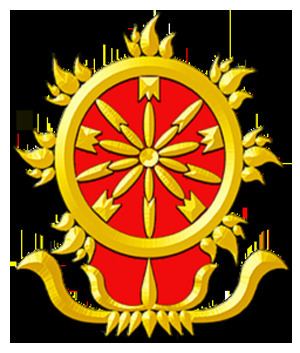Active 1961 – present Branch Indonesian Army | Country Indonesia Size 27,000 (1998) | |
 | ||
Type Army Strategic Reserve Command Force
Army combat command Role combat and warfare reserve corps | ||
Kostrad (Komando Cadangan Strategis Angkatan Darat: "Army Strategic Reserve Command ") is a formation of the Indonesian Army. Kostrad is a Corps level command which has up to 35,000 troops. It also supervises operational readiness among all commands and conducts defence and security operations at the strategic level in accordance with policies of the TNI commander. Kostrad is the main basic warfare combat unit of the Indonesian Army, while Kopassus is the elite-special forces of the Indonesian Army, Kostrad still maintains as the first-line combat unit of the TNI below the Kopassus. This corps has two divisions which are:
Contents
As a corps, Kostrad is commanded by a Panglima (Commander), usually a lieutenant general. Kostrad falls under the army chief of staff for training, personnel, and administration. However, it comes under the Commander-in-Chief of the Indonesian National Armed Forces for operational command and deployment. Kostrad typically receives best equipments in the Army and its two armoured battalions will soon receive Leopard 2A4 and Leopard 2 Revolution tanks.
Starting 1984 the Panglima of Kostrad (Pangkostrad) has been charged to lead the conduct of combat operations, called defence and security operations.
History
Kostrad came into being during military action for Indonesia's take over of Western New Guinea in 1960, and was formally constituted on 6 March 1961. Initially designated the Army General Reserve Corps, its name was changed to Kostrad in 1963.
General Suharto, was appointed as the first head of Kostrad in 1961, and it was in this role that he was able assert the army's control in the days following the abortive coup attempt on the evening of 30 September 1965, which ultimately led to Suharto replacing Sukarno as Indonesian president.
The command's troops have fought in most Indonesian military operations since their formation, such as G-30-S/PKI (30 September Movement/Indonesian Communist Party), Trisula, the PGRS (Sarawak People's Guerrilla Force) in Sarawak, the PARAKU (North Kalimantan People's Force) in North Kalimantan, and Operation Seroja in East Timor.
Kostrad troops have also been used beyond Indonesia's borders, as was the case with Garuda Contingent in Egypt (1973–78) and Vietnam (1973–75) and with those in the United Nations Iran–Iraq Military Observer Group in the midst of the Iran–Iraq War of 1989 and 1990.
Strength
Kostrad had a strength of 27,000 in 1998 and its primary components consist of two infantry divisions and an independent airborne brigade.
There were as of early 1998 a total of 33 airborne and infantry battalions within Kostrad. Each division contained three infantry and/or airborne brigades; an armoured battalion; cavalry reconnaissance company; field artillery regiment of three battalions; air defence artillery battalion; combat engineer battalion; supply and transportation battalion; medical battalion; signal company; military police company; field maintenance company; and a personnel and administrative detachment.
There have been several reports that a third division was to be formed for KOSTRAD, for example in an announcement by then KOSTRAD commander Lieutenant General Hadi Waluyo on 16 March 2005. Waluyo's announcement indicated that the new division was to be formed around the 3rd Airborne Infantry Brigade, which would be shifted to a new site in Papua once the expansion programme had advanced further. However, despite this and other announcements, no third division has yet been established.
List of Kostrad Commanders
Many Kostrad commanders have gone on to very senior Indonesian posts. Suharto became President; General Rudini became Minister of Home Affairs; General Wismoyo is married to the sister of Suharto's late wife; and Lieutenant General Tarub became the armed forces' Chief of the General Staff. General Wirahadikusumah would later become Vice-President.
